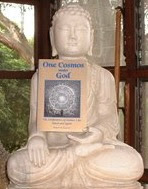Properly speaking, the social sciences are not inexact sciences, but sciences of the inexact. --Dávila,
Well then, let us speak properly. Philosophy and theology are not social sciences, even though it takes a society to have them. The social sciences per se include anthropology, economics, psychology, sociology, linguistics, history, and political science, but each of these either presumes or entails a philosophy, so they can't really be understood without a "meta-view" of themselves.
For example, behaviorism assumes (or implies) a vastly different metapsychology than does, say, psychoanalysis. Likewise Marxism vs. conventional history. Or, touching on our recent posts, a linguistics that situates itself in a logocentric cosmos is irreconcilable with one that regards language as an accidental feature of natural selection.
Theology is a special case, because it can never transcend or take a "meta-view" of its object. But "God" and "ultimate reality" are synonymous, so any pronouncement on the nature of the latter brings God in through the back door.
Not to mention the fact that if a human being can understand the nature of ultimate reality, this implies something rather astounding about human abilities, over and apart from the explicit content. At the very least, it implies that the intellect is a mirror of reality, which is not far from saying that the human being is the image and likeness of its principle.
Man is manifestly the raison d’être of the whole of nature. Moreover, nature could not be ordered to God except through man. God being the end of the universe, it is necessary that the universe be capable of a return to the Universal Principle…. But only an intellectual creature is capable of such a return.
because it knows the universal formality of the good and of being is thereby ordered immediately to the universal principle of being.
In other words, only a creature capable of making a tour of being can rejoin the source of being.
The Human Figure: Man as the Telos and the Knower
The young woman with an outstretched hand and a contemplative gaze represents humanity. Her posture, reaching upward, immediately symbolizes the human search for meaning, connection, and understanding. She embodies:
Man as the raison d'être / Telos: Her prominent position in the foreground against the vast cosmos suggests that humanity is not incidental but central to existence, aligning with your argument that "man is the point -- the telos -- of the whole existentialada."
The Intellect and Consciousness: Her thoughtful expression and the act of reaching reflect the human intellect's capacity to "mirror reality" and its "erotic quest" for truth. She is the "only creature that comes equipped with matter and an immaterial rational soul that is open... to the totality of existence."
The "Cosmic Roundtrip": Her reaching hand implies the active participation in the "return to the Universal Principle" that you discuss, symbolizing the "cosmic roundtrip" completed by mystics and saints.
The vast, swirling cosmic background with galaxies, nebulae, and stars represents the "cosmos" itself -- the material universe.
The "Existentialada": It's the "whole of nature" that, according to De Koninck, is ordered to God through man.
The Material World: It visually grounds the spiritual or transcendent elements, showing that the physical universe is the stage for humanity's journey towards meaning.
The brilliant, ethereal beam of light descending from above and connecting with the woman's outstretched hand is the most direct and powerful symbol in the image. It represents:
The "Vertical Socket" / Divine Principle: This is the direct visual metaphor for the connection to the "Universal Principle," God, or "metacosmic Truth." It signifies that ultimate reality is not merely abstract but accessible and capable of illuminating existence.
Truth, Meaning, and Grace: The light emanating from above signifies divine knowledge, meaning, and perhaps grace, flowing into human experience. It's the "electricity" that gives meaning and purpose to the "wire" of human existence.
Order to God/Truth: It visually embodies the idea that "only rational created nature is immediately ordered to God" or to a "metacosmic Truth."
The way all these elements are integrated creates a sense of profound connection and purpose. The human figure is not lost in the immensity of space but is actively engaging with and receiving from it. This reinforces the idea that human existence, far from being pointless, is a crucial link in the grand scheme of the universe, providing the means for creation to "return to the Universal Principle." The image evokes a feeling of awe, wonder, and the inherent significance of the human journey.































No comments:
Post a Comment